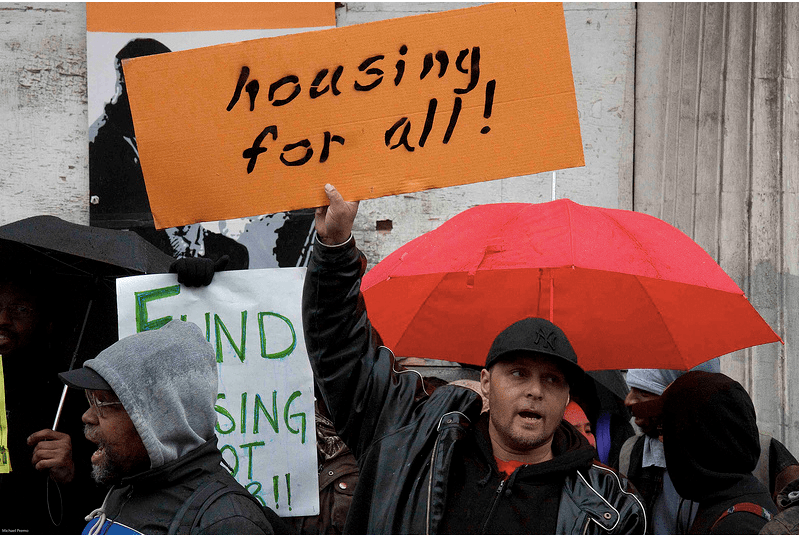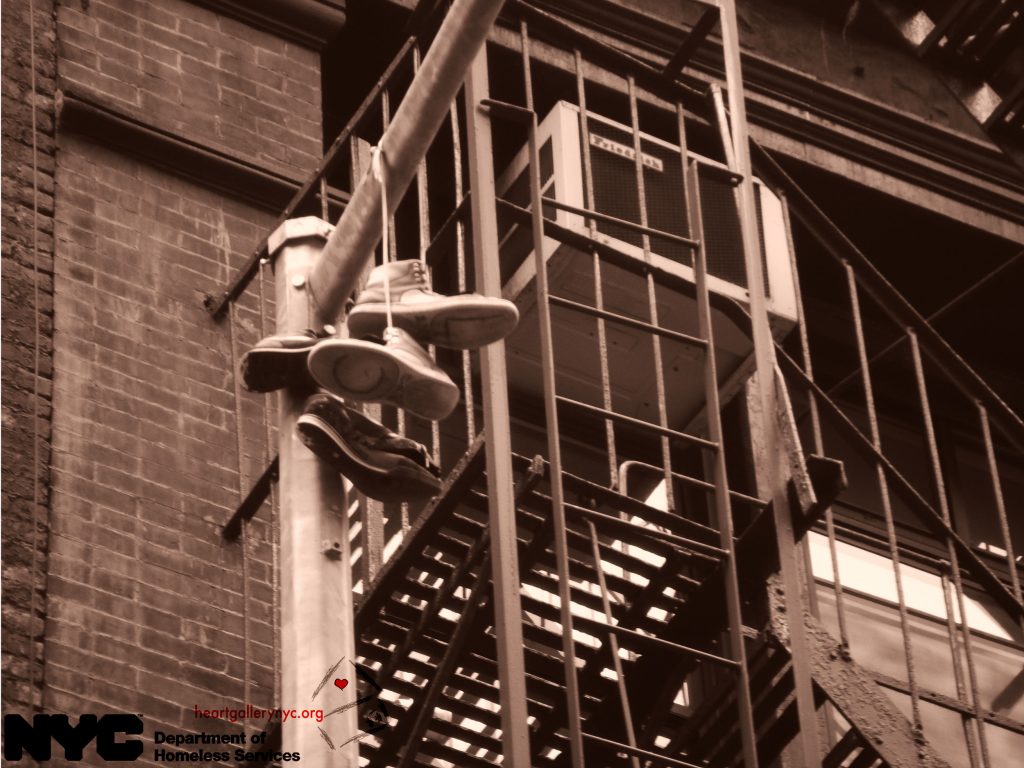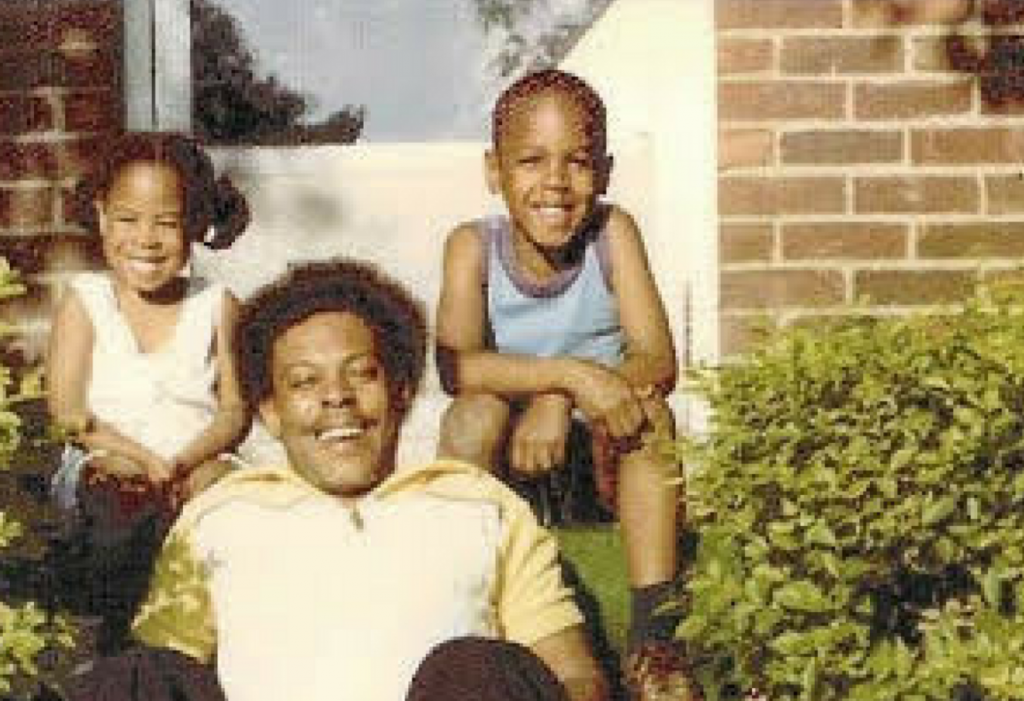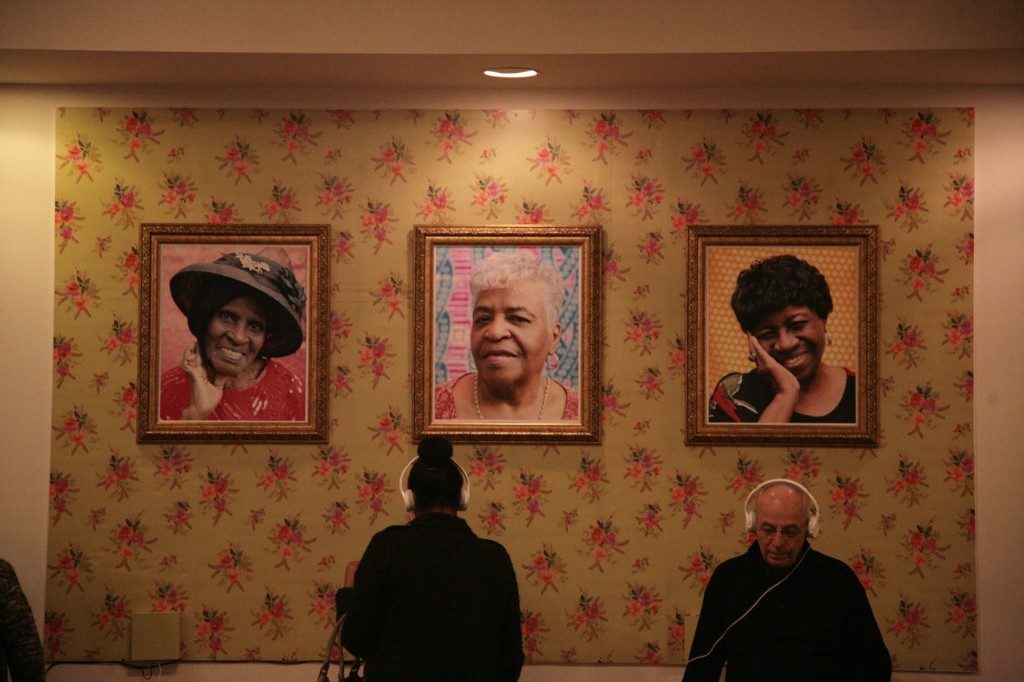THE UNSHELTERED ISSUE
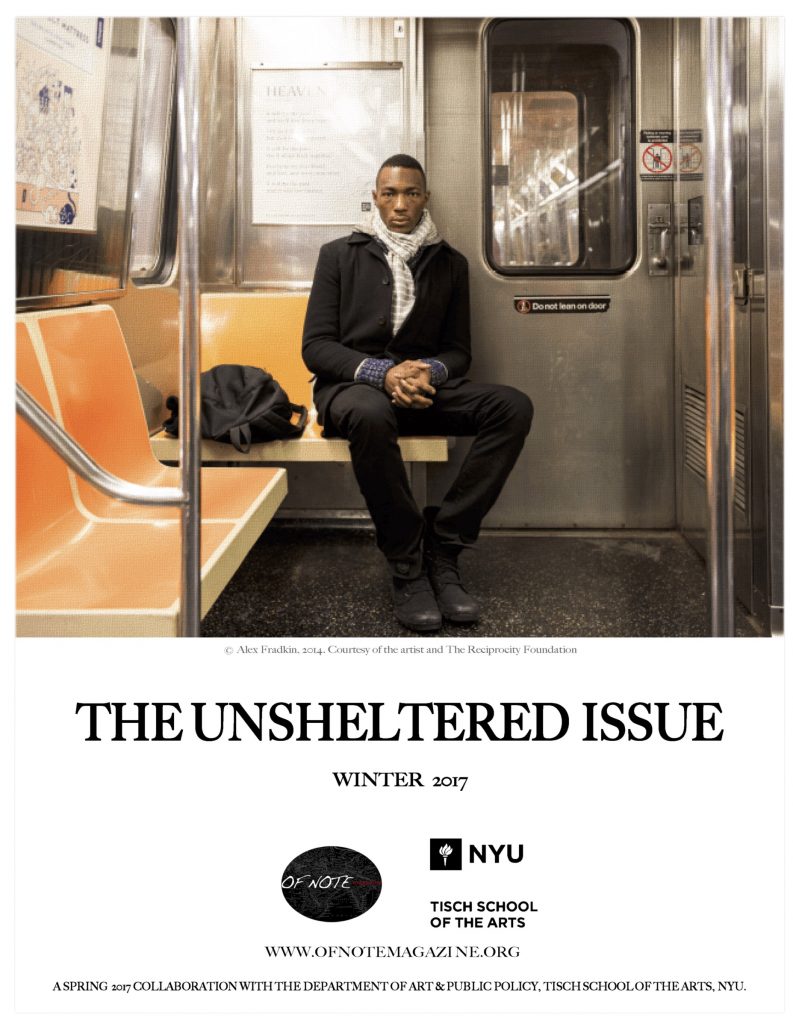
editorial director’s note
In Spring 2017, OF NOTE magazine again embarked on a collaboration with a group of thoughtful and socially-engaged undergraduate and graduate students via the department of Art & Public Policy, in the Tisch School of the Arts at New York University. Students in the “Arts, Social Change and the Role of Journalism” course formed an editorial team, committing to an “activist exploration of the relationship between art and society, and the role of the artist in civic life.” As students of New York University, they took a hyper-local focus on what is happening in the city they live in, looking at how artists use their artistic practices to combat homelessness in New York City’s neighborhoods.
In The Unsheltered Issue, we turned to artists who approached the condition of being homelessness not as monolithic but one on a spectrum. There are many ways of living without a stable and/or safe home–hence our title.
While the statistics of those who are “unsheltered” are often contested, here’s what we know:
• Homelessness in NYC has reached its highest levels since the Great Depression. In November 2017, there were 63,169 people sleeping each night in the NYC municipal shelter system, with families accounting for three quarters of that number.
• Youth homelessness is often underreported and extremely difficult to track. One statistic, however, is illuminating: Within the last six years, more than 140,000 NYC students have experienced homelessness.
• LGBT youth are eight times more likely to experience homelessness, with LGBT youth comprising up to 40% of the
homeless youth population in NYC.
• A large majority of single adults experiencing homeless in NYC have a mental illness or severe health disorder. Nationwide, that figure is at 26%.
When hip-hop theater artist Kilusan Bautista, who is one of the artists profiled in The Unsheltered Issue, visited our team in April, he reminded us that being unsheltered can also mean living in an overcrowded apartment, couch surfing, or living in libraries–all of which he experienced. For him and many New Yorkers, being unsheltered means living in a state of constant physical and mental vulnerability.
After reading The Unsheltered Issue, we hope readers better understand how art is impactful in addressing the unsheltered experience. For this reason, we feature a range of artists-activists: those who after having experienced being unsheltered turn their personal narratives into artistic interventions, those who are working with artists to alleviate the issue of housing insecurity, and who through the support of organizations, use art as a mode of therapy and community engagement.
While the assumption is that solving the unsheltered issue rests with governmental and social service institutions, those featured in The Unsheltered Issue demonstrate a personal and collective responsibility to act as citizens.
The editorial team learned that how we think about homelessness determines how we address it. Through raising questions, the artists included in this issue examine the unsheltered from new perspectives and view stable housing as a human right. It is easy to push the ongoing crisis of homelessness onto others. These artists have agreed to face the complex task of addressing housing and homelessness head on.
It is our hope that through their arts activism, readers will understand the compelling and nuanced definitions of what it means to be unsheltered. And it is our hope that these perspectives will lead to more equitable dialogues and solutions for stable housing in our society.
–Editorial Team, “Artists, Social Change and the Role of Journalism,” Art & Public Policy, Tisch School of the Arts, NYU, Spring 2017
Featured Articles
Rachel Falcone and Michael Premo: Housing is a Human Right
BY DIANE BEZUCHA
Since 2009, Rachel Falcone and Michael Premo have been collecting stories for their oral storytelling project, Housing is a Human Right. At each exhibit, stories are played out loud in community venues so they can be collectively experienced. This emphasis on collectivity lies at the very heart of the project, which aims to challenge our notions of housing insecurity and homelessness as individual experiences of failure rather than systemic neglect.
.
.
Chinatown Art Brigade: Projecting Resistance Through Community Art
BY KAYLA CARROLL AND ELLI HU
In an attempt to reduce the influence of New York City’s biggest gentrifiers on Chinatown, the Chinese-American founders of the Chinatown Art Brigade aim to prioritize accessibility and engagement in art, rather than creating museum-worthy “high art.” They want the community to participate in fighting against gentrification, and to bring visibility to the housing issues in Chinatown, lessening the likelihood of displacement in the region.
..
 Gavin ‘DubbleX’ Alleyne: Decoding Mental Illness and Homelessness
Gavin ‘DubbleX’ Alleyne: Decoding Mental Illness and Homelessness
BY HANNAH FORD KEOHANE
Gavin ‘DubbleX’ Alleyne is a New York-based artist, poet, father, and husband. He’s a former English teacher, a Kendrick Lamar fan, and inventor of the graffiti handstyle XudeL, an eclectic way of writing letters that includes sharp lines, symbols, and coded messages that must be decrypted. He reflects on the invisibility of those who are unsheltered and those afflicted by mental illness through painting and poetry. He speaks to the stigma around schizophrenia to shed light on the lack of mental health care available for low-income individuals.
Heart Gallery NYC: The City of Unsheltered Eyes
BY DANA ABU ALI
Through the Eyes of the Homeless was an initiative created to disturb a process of selective perception. A collaboration between the NYC Department of Homeless Services and Heart Gallery NYC between March and June of 2015, its purpose was to give unsheltered individuals the opportunity to show the city from their perspective and their ownership of it. It used the art of photography to portray the perspectives of women and men that are unable to find shelter within their own city, marginalized from their society, and dismissed by the administration.
Shaka Senghor: The Intentional Storyteller
BY KEEM MUHAMMAD
Shaka Senghor grew up in Detroit, Michigan where his life evolved from scholarly student, to drug dealer, to inmate. For 26 years, Senghor’s story stretched from pain and incarceration into innovation and atonement. Most of the features on Senghor cover different aspects of the same issues: the choices which led to incarceration; the perils faced and discoveries made during his sentence, particularly in solitary confinement; his public advocacy for U.S. prison reform. What isn’t covered in the articles are the times Senghor was living displaced, or unsheltered.
 Nadine Maleh: Designing New Options for Urban Housing
Nadine Maleh: Designing New Options for Urban Housing
BY ANNIE SEMINARA
A space to call one’s own is an essential building block from which security can stem. Nadine Maleh is an architect whose work focuses on designing affordable housing developments in conversation with the men, women, and children who will be living in and around them. For Maleh, the ability to design through communication, trust, and attention to details of accessibility is integral to design with dignity.
.
..
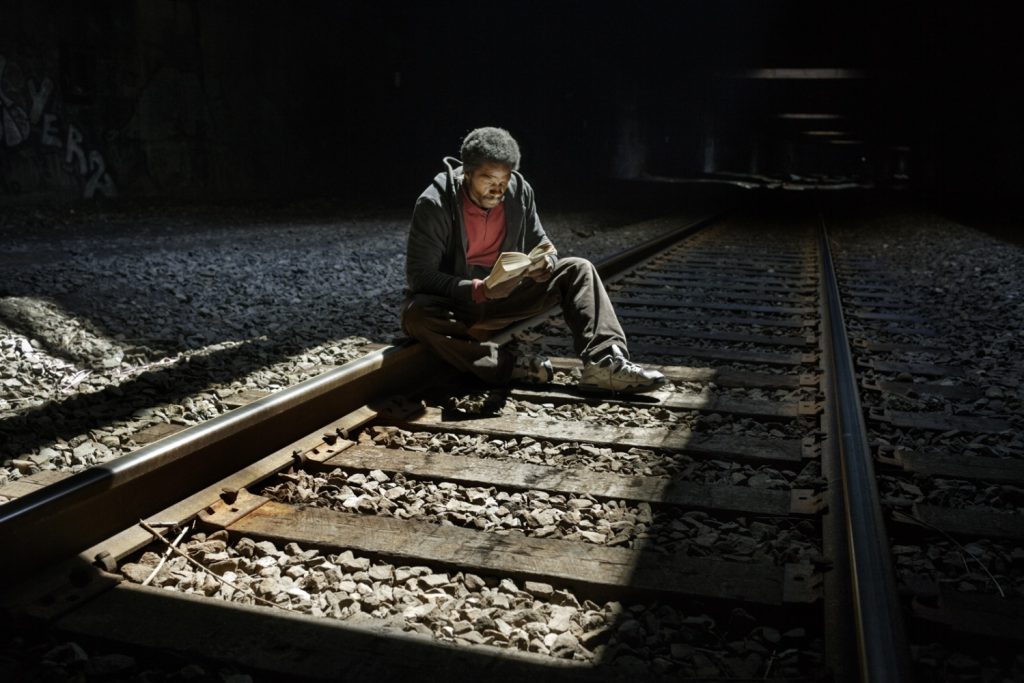 Andrea Star Reese: Life in New York City’s Underground
Andrea Star Reese: Life in New York City’s Underground
BY ALICIA HARTZ
Andrea Star Reese spent seven years, from 2007 to 2014, interacting and photographing a community of people living in New York City train tunnels for her series The Urban Cave. Primarily located in the north side of what is known as “The Freedom Tunnel” under Riverside Park in Manhattan, these tunnels were home to dozens of people facing an array of challenges. From dealing with childhood abuse to drug addiction, The Urban Cave visually documents how people within this community supported one another in the face of bleak circumstances.
Kilusan Bautista: Rendering Homelessness Visible Through Theater
BY ALLANAH AVALON
In Transcend, playwright and multimedia artist Kilusan Bautista deals with his experience with homelessness in Brooklyn in 2010. The multimedia play explores Bautista’s hardship of navigating through the housing market, being homeless and finding himself stretched between shelters, friends’ places, university campuses, and the train. It focuses on the nuanced ways of living for a college student who is simply trying to survive while unsheltered.
More Art: “Refugee. Immigrant. Displaced. Alien.”
BY RODRIGO TORRES
Home(ward), an exhibition on view in Apring 2017 at The Nathan Cummings Foundation (NCF), set an example as a platform to render unsheltered communities visible. From October 27, 2016 to March 17, 2017 Home(ward) presented nine artworks from 10 contemporary artists made either through, or in collaboration with More Art, a NYC-based nonprofit “that fosters collaboration between professional artists and communities.”
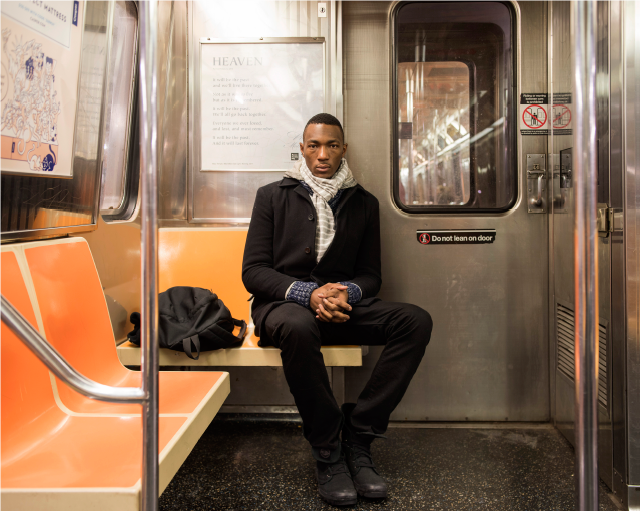 Alex Fradkin and Taz Tagore: Shattering Stereotypes of LGBT Homeless Youth
Alex Fradkin and Taz Tagore: Shattering Stereotypes of LGBT Homeless Youth
BY BRITTANY WEBB
Taz Tagore and Adam Bucko are co-founders of The Reciprocity Foundation. Located in Manhattan, the nonprofit works with 100-200 unsheltered LGBT youth per year, providing emotional support to those who have suffered traumatic experiences as a result of their sexual and/or gender orientation. Many of them have been entrapped in a cycle of displacement from an early age, and find it hard to shake the various circumstances they’ve encountered. Being invisible becomes a survival mechanism.

